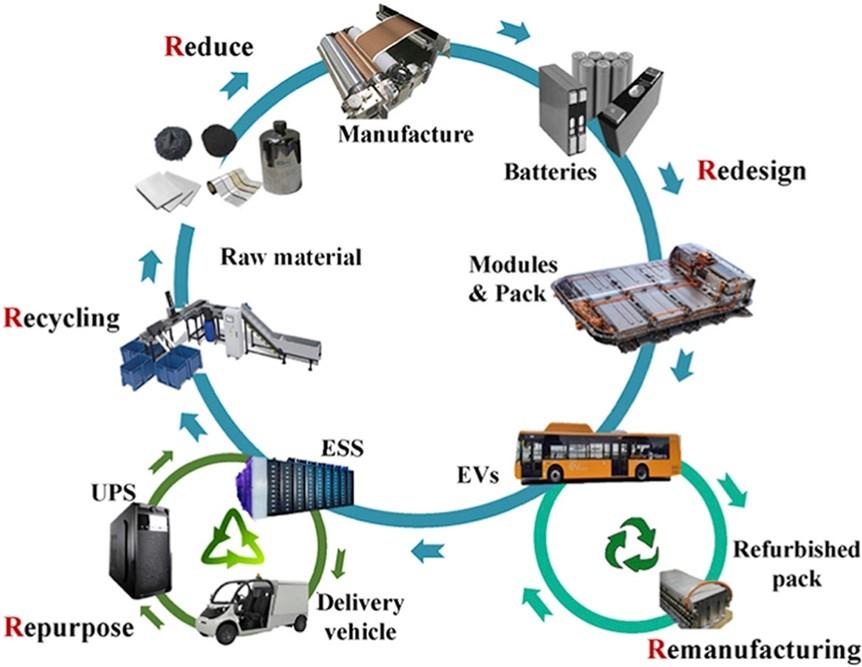TIØ4856 - Bærekraftig innovasjon i industriklynge - EIT
Building Sustainable Solutions for the Lithium ion Battery Value Chain
Sustainable innovation is necessary to create robust solutions for the energy challenges the world faces. According to estimates, by 2030 more than 200,000 metric tons of Lithium Ion Batteries (LIBs) will have to be recycled in Europe alone. Norway will have the major share of these because of the vast adoption of Electric Vehicles (Building a Circular Battery Economy in Norway, 2021)
To create a resilient circular economy, Sustainable business model (SBM) innovations across the whole battery value chain will have to be developed and implemented. This includes incorporating sustainability in the business models of all stakeholders/firms involved in the value chain and needs interdisciplinary cooperation. Cradle to cradle framework considering recycling, reuse, and repurposing of the batteries will require special attention to achieve circularity.
Relevant competency Required
Innovation, change, and sustainability challenges are complex processes and require interdisciplinary efforts. Perspectives on becoming a change agent, as well as innovation and entrepreneurial methods will be presented in the course, in collaboration with SFU Engage. Students from all educational backgrounds are therefore welcome in the village.
Facts
- Course code: TIØ4856
- Village title: Building Sustainable Solutions for the Lithium ion Battery Value chain
- Type: Semester
- Language: English
- Village supervisor: Saad Ahmed & Théophile Martin
- Semester: Spring 2023
- Location: Trondheim
About the village
In this village, you will learn to identify challenges and develop solutions that can contribute to the circular value chain (see figure 1) of Lithium-Ion batteries. The challenges will be linked to the stages of the battery value chain including mining for raw materials, manufacturing, design, usage, collection, reusing/repurposing, recycling, and disposal, as well as communication and cooperation between the stakeholders. Each stage in the value chain is connected to the next and it is therefore important to understand the impact a solution at one stage can have on the overall value chain.
Figure 1 shows the circular value chain of a Li-Ion Battery (Hua et al., 2020).

Changes and innovation are demanding, and you will meet resistance. In this village, we will use entrepreneurial methods that can help to understand and manage such change processes. You will also work with industry partners connected to the HoLE-LiB project, which aims at developing SBMs for the battery value chain as one of the main objectives.
The solutions should be able to live on even after the course has ended. Either in the form of new solutions and processes being used in industries, or the project results being taken on in a start-up.
Viktig informasjon om EiT:
- Det unike med EiT er fokuset på samarbeidskompetanse og gruppeprosesser.
- Undervisningsformen i EiT forutsetter at alle bidrar og er til stede hele semesteret. Derfor er det obligatorisk tilstedeværelse hver landsbydag.
- I motsetning til mange emner er spesielt de første dagene viktig i EiT. Det er da dere i gruppa blir kjent med hverandre, og diskuterer hva hver enkelt kan bidra med. Dere skal også utarbeide den obligatoriske samarbeidsavtalen, samt begynne å utarbeide en felles problemstilling.
- Utfyllende informasjon om Eksperter i team finner du på siden for studenter.
